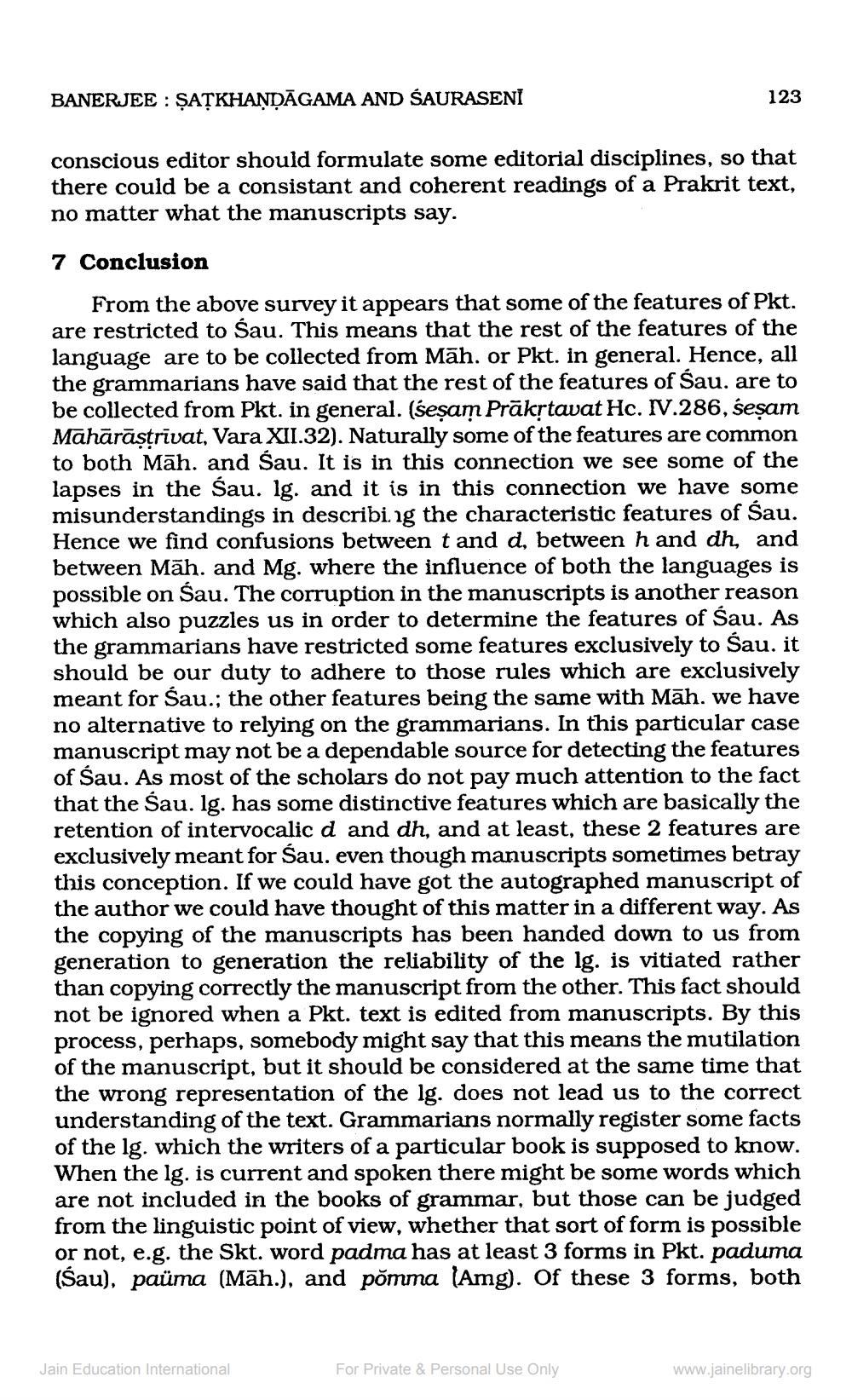________________
BANERJEE ȘATKHANDAGAMA AND SAURASENİ
conscious editor should formulate some editorial disciplines, so that there could be a consistant and coherent readings of a Prakrit text, no matter what the manuscripts say.
7 Conclusion
From the above survey it appears that some of the features of Pkt. are restricted to Ŝau. This means that the rest of the features of the language are to be collected from Mah. or Pkt. in general. Hence, all the grammarians have said that the rest of the features of Śau. are to be collected from Pkt. in general. (seṣam Prākṛtavat Hc. IV.286, seṣam Mahārāṣṭrivat, Vara XII.32). Naturally some of the features are common to both Mah. and Śau. It is in this connection we see some of the lapses in the Sau. lg. and it is in this connection we have some misunderstandings in describing the characteristic features of Śau. Hence we find confusions between t and d, between h and dh, and between Mah. and Mg. where the influence of both the languages is possible on Śau. The corruption in the manuscripts is another reason which also puzzles us in order to determine the features of Sau. As the grammarians have restricted some features exclusively to Śau. it should be our duty to adhere to those rules which are exclusively meant for Śau.; the other features being the same with Mah. we have no alternative to relying on the grammarians. In this particular case manuscript may not be a dependable source for detecting the features of Sau. As most of the scholars do not pay much attention to the fact that the Sau. Ig. has some distinctive features which are basically the retention of intervocalic d and dh, and at least, these 2 features are exclusively meant for Śau. even though manuscripts sometimes betray this conception. If we could have got the autographed manuscript of the author we could have thought of this matter in a different way. As the copying of the manuscripts has been handed down to us from generation to generation the reliability of the lg. is vitiated rather than copying correctly the manuscript from the other. This fact should not be ignored when a Pkt. text is edited from manuscripts. By this process, perhaps, somebody might say that this means the mutilation of the manuscript, but it should be considered at the same time that the wrong representation of the lg. does not lead us to the correct understanding of the text. Grammarians normally register some facts of the lg. which the writers of a particular book is supposed to know. When the lg. is current and spoken there might be some words which are not included in the books of grammar, but those can be judged from the linguistic point of view, whether that sort of form is possible or not, e.g. the Skt. word padma has at least 3 forms in Pkt. paduma (Śau), paüma (Mah.), and pomma (Amg). Of these 3 forms, both
Jain Education International
For Private & Personal Use Only
123
www.jainelibrary.org




